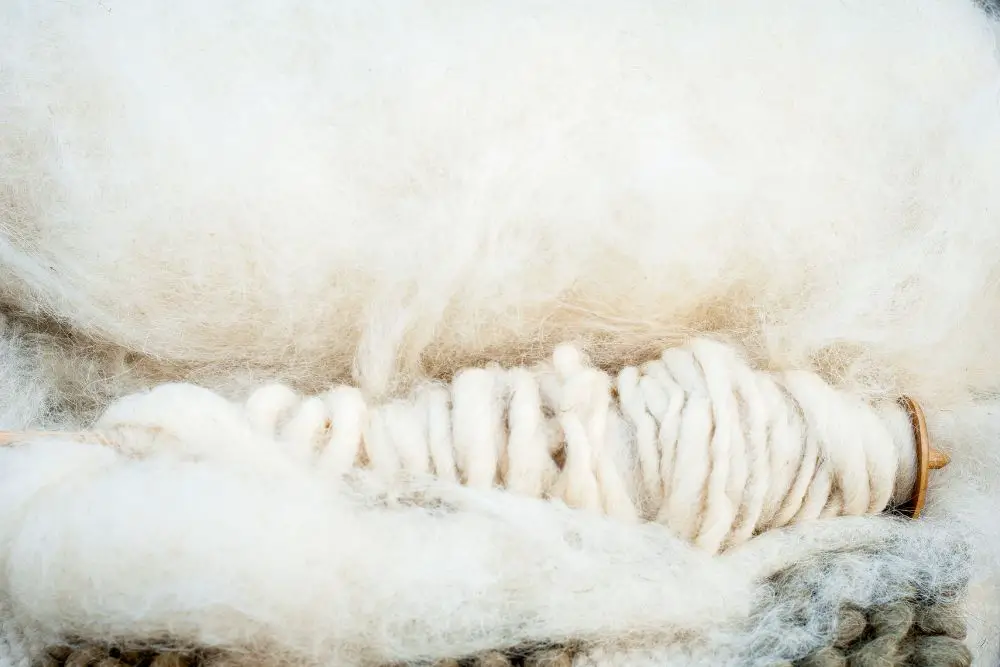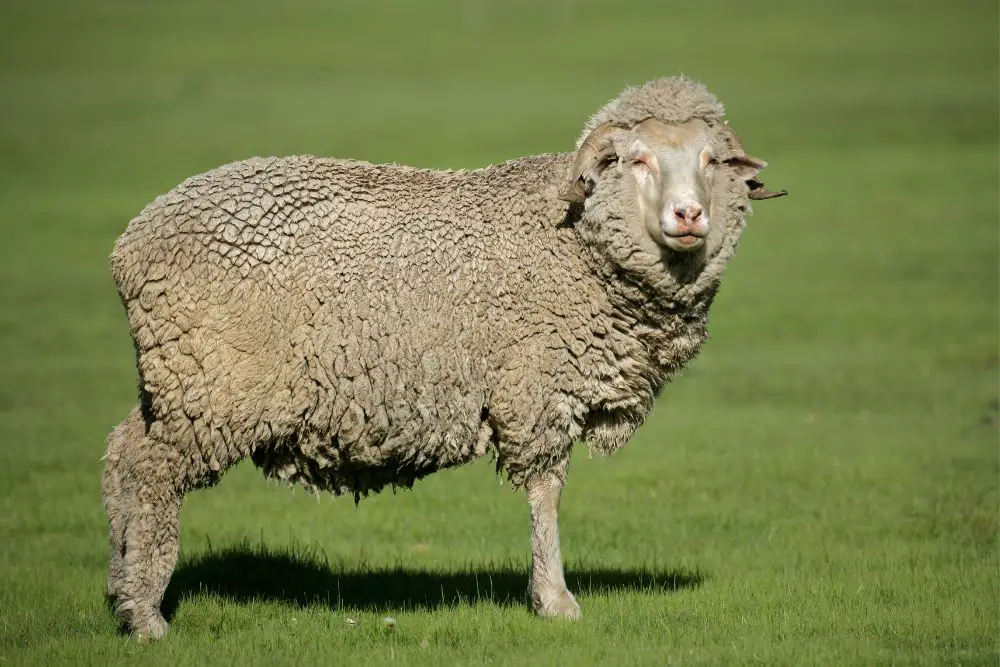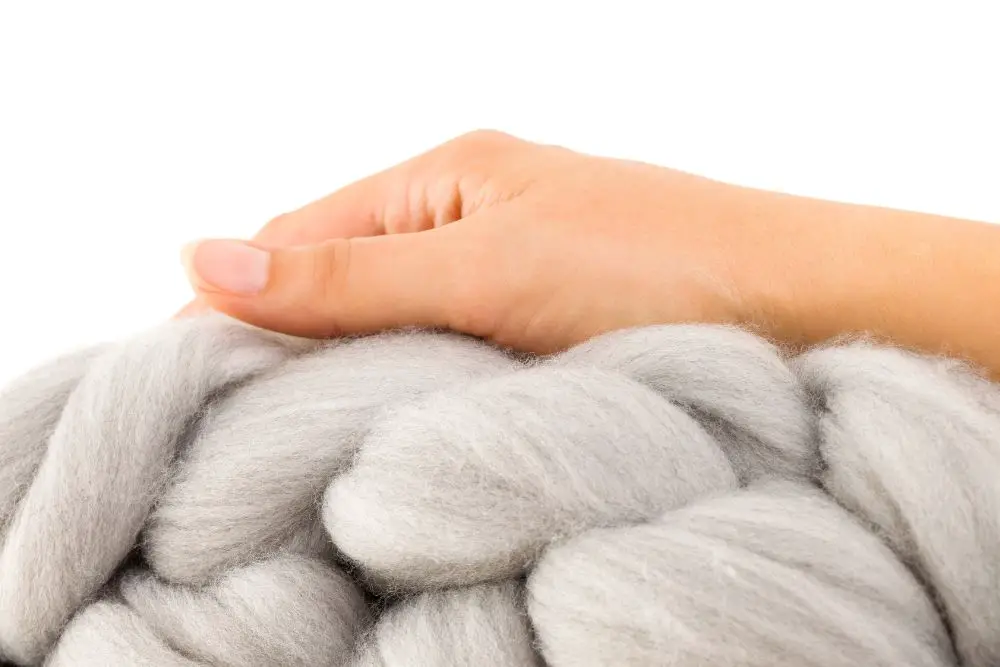Merino wool comes from Merino sheep, a breed popular throughout Australia and New Zealand. This type of wool is superior because of its soft and luxurious feel, paired with doing well in both wet and warm weather. It is used in many outdoor garments while also appealing to luxury clothing artisians.
Wool is one of the oldest animal fibers and is used to produce an incredible array of products. It has helped drive commerce across the world, and over the centuries has become one of the most important and valuable natural resources that mother nature offers.
There are hundreds of varieties of wool, but the most sought-after wool in the world is undoubtedly Merino wool.
Table of Contents
What Is Merino Wool?
Merino wool comes from the fleece of the Merino sheep which are originally from Spain but the largest populations are found primarily in New Zealand and Australia today .
It is one of the softest types of wool in the world from any breed of sheep and one of the most luxurious.

Merino wool, like all wool, is made up of keratin, and features trace amounts of sodium, fat, and calcium. What makes Merino wool special is that this fine wool has a natural crimp, and measures a mere 17 microns, which is half the diameter of other sheep breeds. For comparison purposes, human hair can have between 50 and 100 microns.
Merino wool fibers are also flexible and small enough that they can be easily molded to particular shapes which makes them ideal for Merino wool garments.
Unlike many wool types, Merino sheep’s wool is soft enough to be worn next to the skin, with a feel that many liken to cashmere.
How Merino Wool Benefits Us
There are many reasons why people want to wear Merino wool:
- Merino wool fabric is naturally temperature regulating and it is considered a smartwool, which can help control body heat and body temperature.
- In warm weather, Merino wool has high breathability and comes in a midweight fabric range. It has moisture-wicking and odor-resistant properties, making it ideal for warm climates.
- These natural fibers also perform exceptionally well in cold weather, with heavyweight Merino wool fabric options that have integrated Merino wool base layers for extra warmth.
- Merino wool is made from a natural fiber, that is consistently high-quality. It also has the benefit of being wrinkle-resistant and is machine-washable so no need for hand-washing!
- Merino wool is hypo-allergenic and recommended to be worn by people who have skin conditions like eczema. Unlike cotton and synthetic fabrics, Merino wool is UV resistant and can help protect the skin.
It also doesn’t produce static, which can help people who have sensory issues.
Why Merino Wool is Better For The Environment
Wool is a natural resource that is renewable and sustainable. Sheep grow wool by processing the grass that they eat, and wool continually grows throughout a sheep’s life.
All domestic sheep breeds that grow wool need humans to shear them – by removing the heavy wool, they can move easier and do the things sheep love to do best!

Merino wool is highly durable and that means wool products made from Merino wool will last longer than other “fast fashion” fibers. This means less consumerism and less harm to the environment.
Merino wool has the benefit of being an eco-friendly material and is often used to combat oil spills because it soaks up the oil. It is also biodegradable and fibers placed in soil will completely break down within a few years.
Typical Uses of Merino Wool
| Hiking | Outdoor enthusiasts love Merino wool clothing particularly as a base layer under long-sleeve shirts because of their natural wicking and antibacterial properties. Merino wool socks are also a popular choice for hikers, who depend on a fabric that provides cushion but also remains dry. |
| Stormwear | Merino wool hoodies are a popular choice in inclement weather as they absorb rainwater and disperse it through the fabric while keeping the area nearest the skin dry. It can hold over 30 percent of its weight in water before reaching saturation! |
| Luxury | Merino wool is often used in women’s clothing, particularly for luxury brands. Superfine Merino leggings have grown in popularity and are known for being stylish and comfortable. Merino wool t-shirts and crew necks are often worn by people who appreciate the wrinkle-resistant fabric that looks and feels expensive without the upkeep of other wool types. Merino wool is also used for hats, gloves, and scarves and serves both fashion and function. |
| Fire Fighting | Merino wool has the added benefit of being flame retardant, and is used by firefighters and first responders as base layers underneath their uniforms. Talk about an all star! |
| Home Decor | Wool is not just used by the clothing industry either. Yarn waste is often turned into home furnishings such as carpet, bedding, soft furnishings, home decor, insulation, fertilizer, and more! |
FAQs
How expensive is Merino wool?
Merino wool is highly desirable due to its versatility. Wool also takes a long time to grow and harvest which unfortunately makes it the most expensive wool in the world.
For farmers who raise Merino sheep, the market for their wool remains consistently high. Unfortunately, many small farmers cannot afford to raise them because Merino sheep can cost thousands of dollars each.
Is Merino wool itchy?
No! Unlike other wool, Merino wool is superfine and soft.
Is Merino wool durable?
Merino wool is highly durable, machine washable, and stands the test of time with proper care. Heavily used Merino wool garments such as t-shirts (especially if they are thin and used as base layers) are most at risk of holes and pilling.
How do you care for Merino wool?
Merino wool is machine washable though it is advisable to only wash as needed, and on a low temperature or gentle care setting to avoid shrinkage. Bleach and fabric softeners should be avoided so as to not damage the fibers.
Merino wool should be allowed to dry naturally as it dries faster than other fabrics – no need to throw it in the dryer.
Does Merino wool smell?
No. Merino wool fibers have a scaly surface and have two different kinds of cells, which are constantly in motion and create friction. This perpetual motion doesn’t allow bacteria to settle into those cells and bacteria is the cause of clothes smelling bad.

